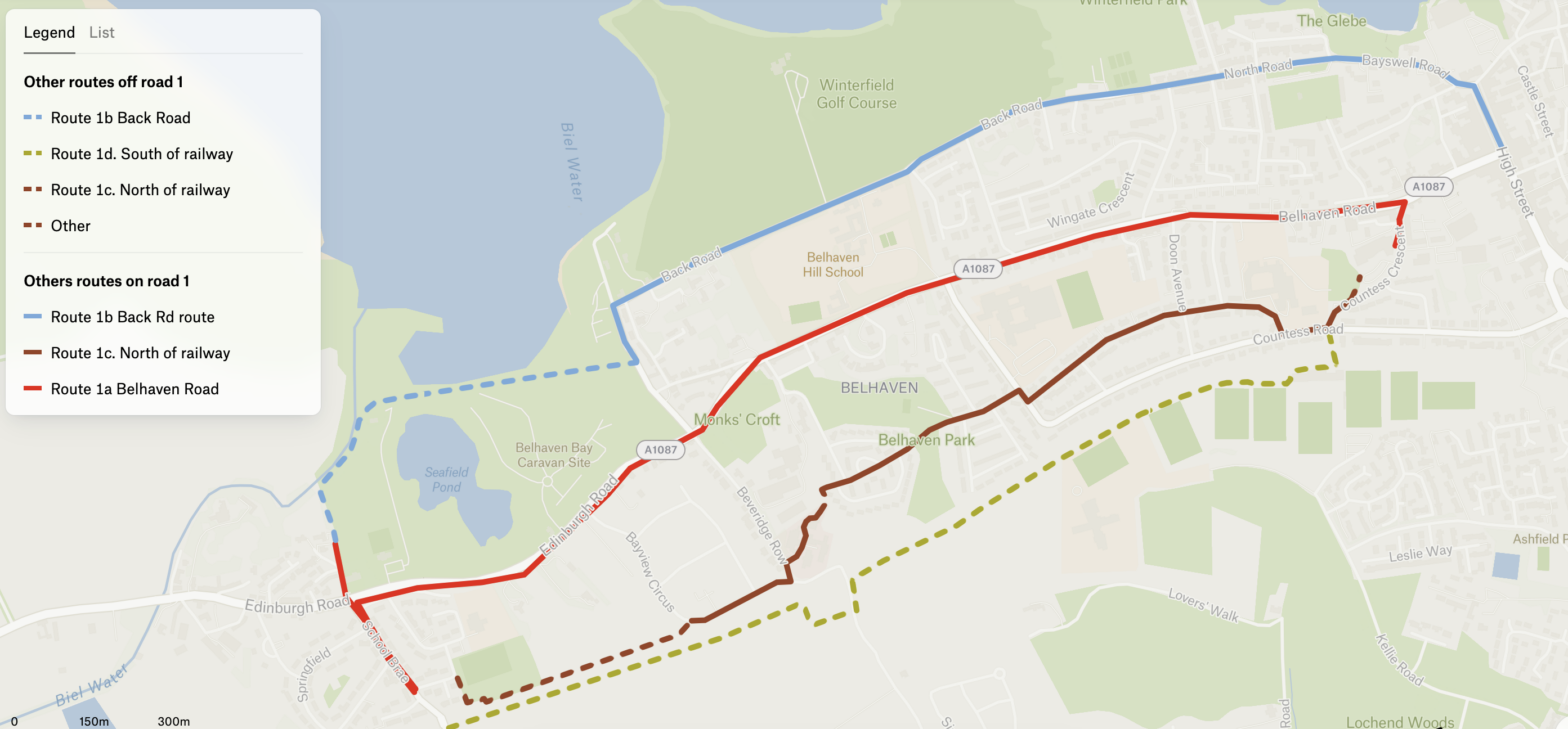We’ve been busy developing route options, designed to meet a significant number of routine journeys in the main directions (West – East and also South North) to trip generators and along obvious desire lines, while avoiding heavily trafficked main roads. Here’s some proposals that would take people off the main A1087 on to either traffic calmed or generally quieter roads. In time a completely off road route south of the main line railway is a realistic possibility.
We’ve opened comments so you can leave a specific comment or general ones on the options appraised and the aggregate scores:
Summary appraisal
| Route | 1. West Barns to Dunbar centre | |||
| 1a. Main Rd route | 1b. Back Road route | 1c. New E-W route north of railway | 1d. New E-W cycle south of railway | |
| From | School Brae, West Barns | School Brae, West Barns | School Brae, West Barns | School Brae, West Barns |
| Via | A1087 | A1087, Sea Rd, off road path, Back Road | New path from West Barns Primary Sch playing fields on new path on north side of railway to Bayview Circus. Through Belhaven hospital on road to existing path linking to Pine St, then Lammermuir Crescent | New path on southside of railway School Brae to Hospital Rd, and continuing on to sports field, and thence by exisitng paths |
| To | Bleachingfield Centre | Bleachingfield Centre | Bleachingfield Centre | Bleachingfield Centre |
| Option score | -3 | 15 | 9 | 20 |
We look at the following criteria to evaluate the options. We score each criterion on a scale -3 to +3. The highest theoretical score possible is 27. The lowest -27.
Evaluation Criteria
| Safety |
| Design should minimise the potential for actual and perceived risk of accidents for all users. |
| Directness |
| Design should be as direct as possible and minimise detours and delays. The impact of junctions and crossings on journey times should be considered. |
| Coherence |
| Design should be continuous and consistent from origin to destination. |
| Comfort |
| Design should meet surface width, quality and gradient standards and be convenient by avoiding complex manoeuvres. |
| Attractiveness |
| Design should complement and enhance its environment in such a way that cycling is attractive. |
| Adaptability |
| Design should consider the potential for future expansion and cater for an anticipated rise in the number of people cycling. |
| Accessibility |
| Design should comply with the Equality Act 2010 and cater for all types of bike |
| Socio-economic |
| Local businesses should benefit |
| Deliverability |
| Constraints and objections should be overcome in delivery timeframe. |

